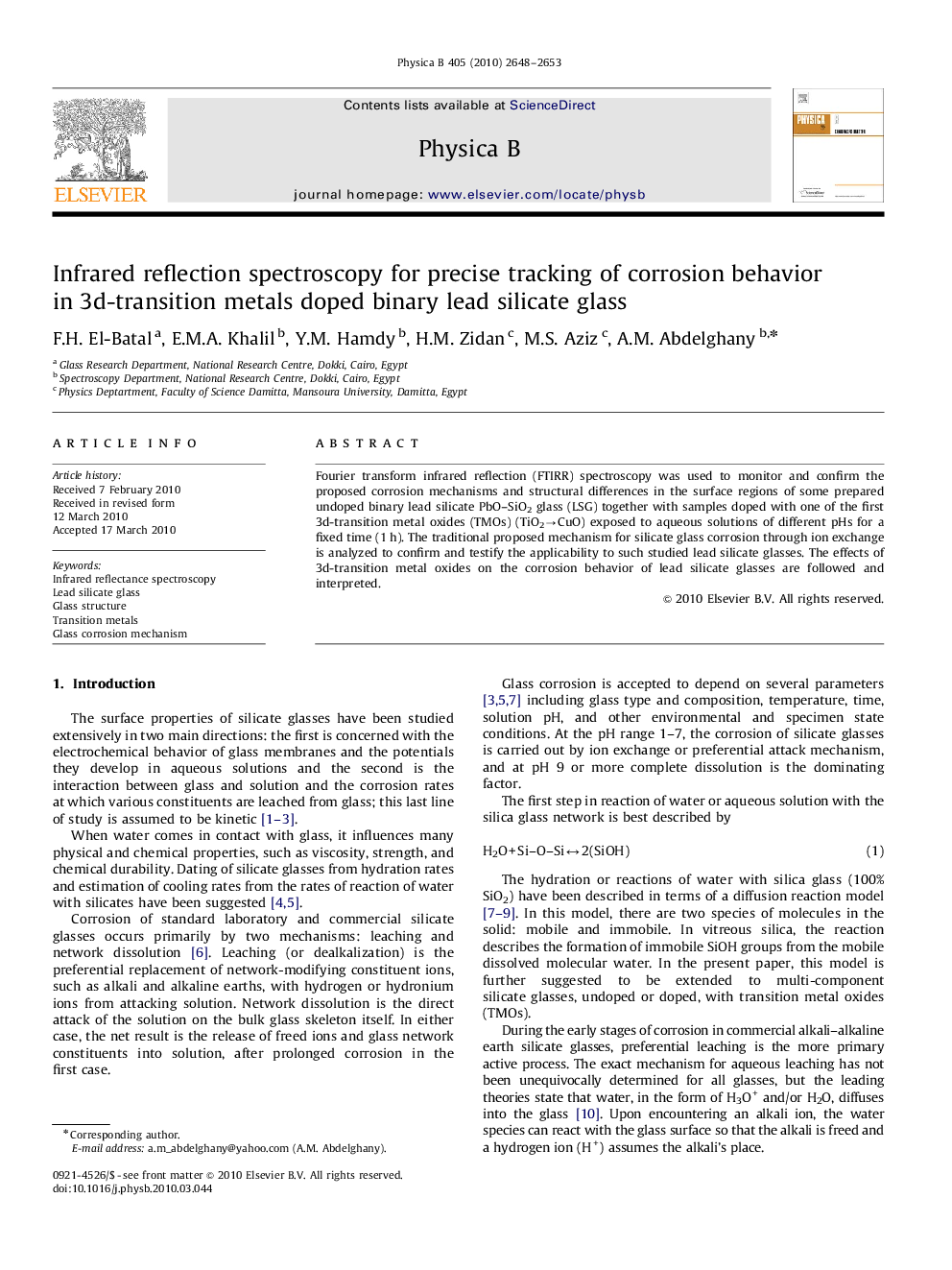| Article ID | Journal | Published Year | Pages | File Type |
|---|---|---|---|---|
| 1812704 | Physica B: Condensed Matter | 2010 | 6 Pages |
Abstract
Fourier transform infrared reflection (FTIRR) spectroscopy was used to monitor and confirm the proposed corrosion mechanisms and structural differences in the surface regions of some prepared undoped binary lead silicate PbO–SiO2 glass (LSG) together with samples doped with one of the first 3d-transition metal oxides (TMOs) (TiO2→CuO) exposed to aqueous solutions of different pHs for a fixed time (1 h). The traditional proposed mechanism for silicate glass corrosion through ion exchange is analyzed to confirm and testify the applicability to such studied lead silicate glasses. The effects of 3d-transition metal oxides on the corrosion behavior of lead silicate glasses are followed and interpreted.
Related Topics
Physical Sciences and Engineering
Physics and Astronomy
Condensed Matter Physics
Authors
F.H. El-Batal, E.M.A. Khalil, Y.M. Hamdy, H.M. Zidan, M.S. Aziz, A.M. Abdelghany,
